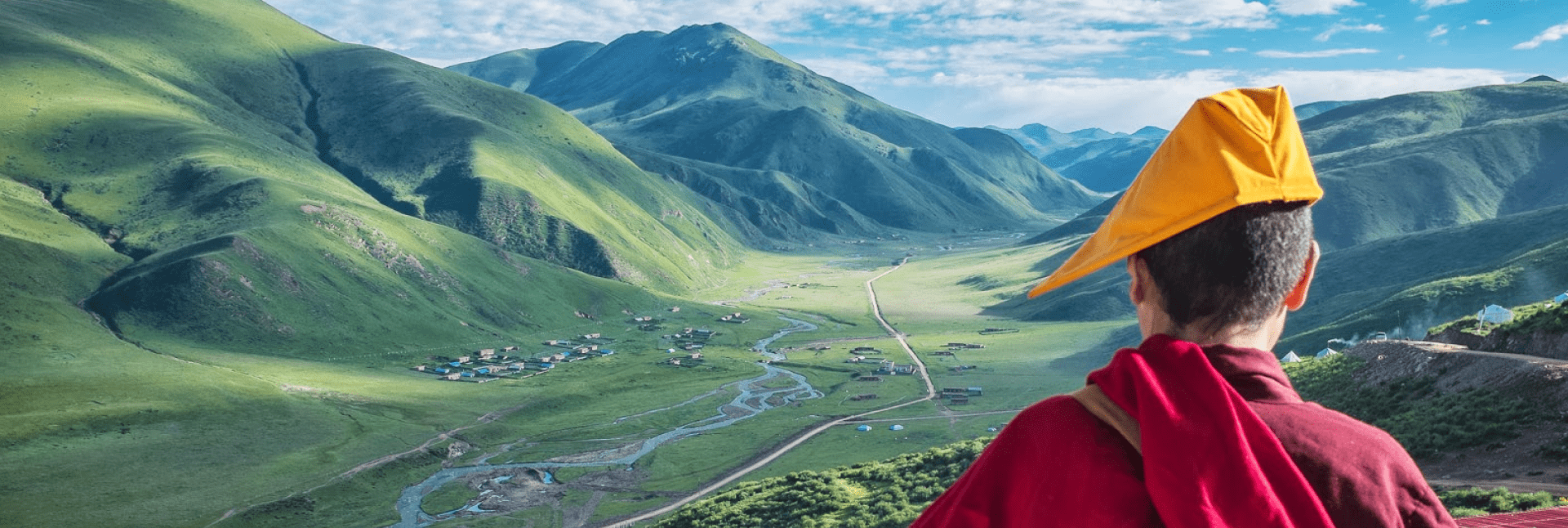
10 Times Tibet Watch Made a Difference
From their field office in Dharamsala, a team of Tibetans work tirelessly to deliver breaking news from Tibet
Our research partner Tibet Watch, based in Dharamsala, works tirelessly to obtain news and information from inside occupied Tibet. Through their work, we can bring information of China’s human rights abuses to a global audience. Here are some of the team’s key work over the past year.
1. Revealing deaths in detention
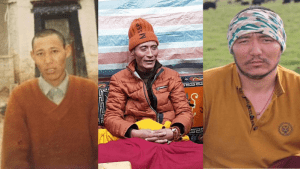
From left: Choekyi, Tashi Phuntsok and Samdup
In 2020, Tibet Watch revealed the deaths of four political prisoners who died from torture and denial of access to medical treatment. Gendun Sherab and Choekyi were both “released” in extremely poor health, and blacklisted from admission to hospitals. Tashi Phuntsok and Samdup were admitted to hospital following their “release” but died from the horrific injuries and illness sustained in prison.
2. Highlighting the threats to Tibet’s environment
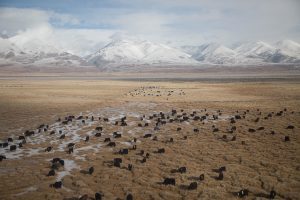
Tibet Watch has monitored the developing trend of construction of national parks and railway lines, as well as the lack of emergency assistance to Tibetans affected by floods, and a massive forest fire in a fragile ecosystem of primitive forests in the south-eastern Tibetan town of Nyingtri.
3. Reporting on how Tibetans are forced to hang CCP leaders’ photos in home
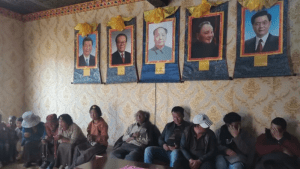
CCP leaders’ photos displayed at a “night school” in eastern Tibet
Previously enforced measures to impose loyalty and gratitude to CCP leaders have gained momentum and become widespread in remote villages of eastern Tibet. Tibet Watch has obtained photos of Tibetan villagers assembled for “night classes” under photos of CCP leaders which were pasted onto Thangkas, traditional Tibetan Buddhist scroll paintings. Another photo shows Tibetans given a pile of framed photos of CCP leaders.
4. Exposing crackdowns on Tibetans following COVID-19 outbreak
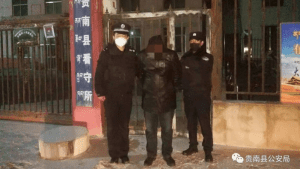
Tibetan in custody in front of the Mangra detention centre, eastern Tibet
Tibet Watch found further crackdown on online communication leading to 75 chat groups being shut down, 298 chat groups registered with the Chinese authorities, and 223 required to submit a letter pledging to not “spread rumours” in 16 villages and five monasteries of eastern Tibet. At least three Tibetans were found to be detained for five to ten days for “spreading rumours” and fined 500 yuan, and a cash prize of up to 85,000USD was announced in central Tibet for citizen informants who reports “illegal content.”
One of the biggest crackdowns found by Tibet Watch shows between 4000 and 5000 Tibetan households in central Tibet investigated for having contacts with Tibetans outside Tibet in May 2020, following which in June 2020 Tibet watch’s sources in northern India were found to be blocked from their WeChat account.
5. Breaking news of arrests and detentions restricted under internet surveillance
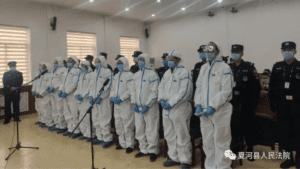
Ten Tibetans who were arrested for protesting at a slaughter company
In January 2020, Tibet Watch learned of the detention of Tsering Dorje in February 2019 for speaking to his brother in exile about the importance of the Tibetan language. In April 2020, we learned of the detention of 75-year-old Jampa Dorje and his son in December 2019 for listening to the Dalai Lama’s teachings.
On 29 June 2020, ten Tibetans from eastern Tibet were sentenced to 8-13 years in prison for their protest against the construction of slaughterhouses. In July, three Tibetans were arrested for their musical tribute to the Dalai Lama, and two Tibetan nomads from Tsongon area in eastern Tibet were arrested on 21 August 2020 for resisting signing a grassland ownership document.
6. Reporting on the forced relocation of Tibetan nomads
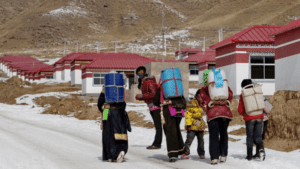
Nomads who have been forcibly relocated to military-style barracks
Three instances of mass relocations of thousands of Tibetan farmers and nomads in eastern and central Tibet were found by Tibet Watch. Their research found a couple of photos in which each of the new “socialist” houses, where Tibetans have been forcefully relocated to, hoists the Chinese flag, and another in which the relocated Tibetans are shown standing together carrying spades. There are no other photos or proof by the CCP that the relocated Tibetans can continue their traditional livelihood of farming in their vicinity.
7. Highlighting China’s military buildup in Tibet

Chinese tanks deployed in Tibet
2020 was marked with Tibet Military Command being deployed across the country from Tibet’s capital of Lhasa to its border regions showcasing new battle tanks and howitzer. Later in May 2020, Tibet Watch obtained credible information from a source from eastern Tibet who shared details about the construction of a military camp close to Bhutan.
8. Monitoring the enforcement of “ethnic unity” law
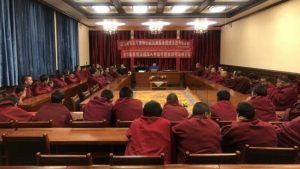
Compulsory training for monks and nuns in Dzoge region of Tibet
Tibet Watch has gathered evidence of how the so-called “ethnic unity”, law which came into effect on 1 May 2020, has been enforced in monasteries particularly and the general public. Monks were forced to attend compulsory training on law and policy, while other monasteries were ordered to take down Tibetan flags from the rooftops for “environmental” reasons. Younger generations of Tibetan are made to study Xi Jinping Thought, marry Han Chinese and those who participate in “separatist” activities were banned from applying to police jobs.
9. Breaking the news of Tashi Wangchuk’s release

We also bring good news from Tibet. Tibet Watch has been constantly monitoring the Tibetan language advocate Tashi Wangchuk’s release as his five-year prison sentence was expected to come to an end in January 2021. As soon as his lawyer announced the release on Twitter, Tibet Watch has ensured the immediate dissemination of the news to the world.
10. Providing expert analysis for journalists

Tibet Watch’s Senior Researcher, Wangden Kyab has provided expert analysis on the growing internet restrictions inside Tibet to many news outlets including Radio Free Asia, which is one of the most important radio channels listened to by Tibetans all over the world.
Tibet Watch’s findings have provided facts and insights from Tibetans inside Tibet and contributed immensely to the direction of Free Tibet’s campaigns. The information compiled on Tibet has also provided the documentation of facts for the Conservative Party Human Rights Commission to understand the overall trend of the human rights situation in Tibet and China, as well as the security issues on the India-Tibet border.
